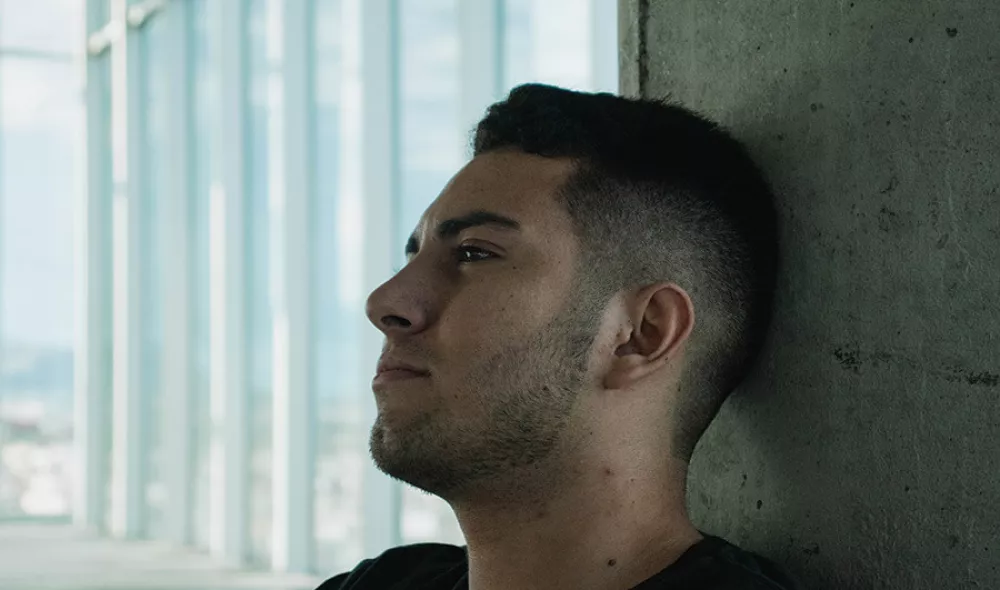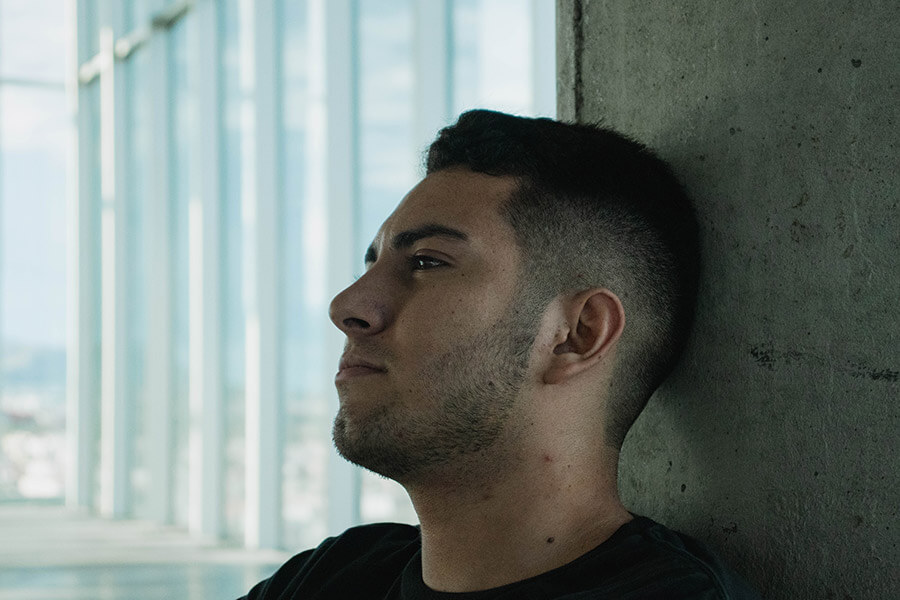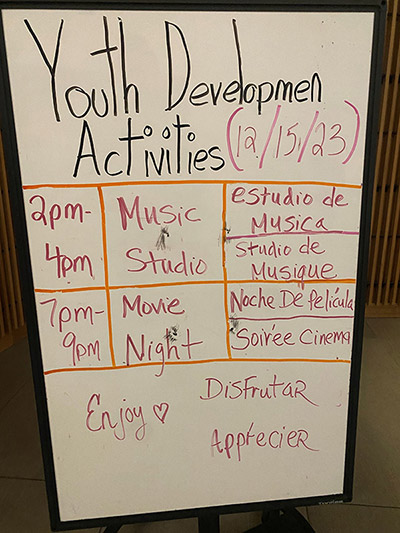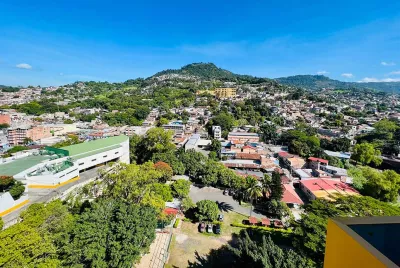We’re Here for Young People

Since July 2022, Covenant House New York has served more than 250 young people who have migrated to the U.S. from other countries. While our doors have always been open to youth from other cities and countries, there has been a significant increase in young immigrants seeking residency with us. They’re searching for the same things all our youth seek: safety, stability, and the opportunity to grow into their great promise.
“Like the young people we’ve always served, they just want to better their lives and find their place in this world, find their spot,” says Lisa Crook, CHNY chief program officer. “They have the same goals. They have the same desires, the same hopes, and the same dreams.”

And they share another commonality, she says. “The journey of the young people who come to us, no matter where they’re coming from, is rooted in trauma, destabilization, and fear.”
CHNY saw the largest influx of young people from the migrant trail last summer, when southern governors began busing asylum seekers to New York City and other destinations far from the southern U.S. border. “For a very long time, because of our proximity to the Port Authority Bus Terminal and because we’re so well known in the area, many of the young people were coming directly to us,” Lisa says.
That made it hard to accommodate everyone, and CHNY referred some of the youth to other shelters. “It was devastating every time we had to do this,” she says. “We worked with the youth to find them a bed somewhere else, but we would like to have had that bed for them, to have been that soft place to land.”
The dynamic has changed over the ensuing months, as newcomers filter out throughout the city. In the early months, most came from Latin America, especially Venezuela. Today, they arrive from a greater diversity of countries, most notably from African countries.
Responding to New Challenges
Our staff are challenged in new ways to provide young asylum seekers the same unconditional love and absolute respect that envelops every young person in our care. Lisa ticks off some of the most persistent challenges that have demanded creative solutions: language, access to health care, education, legal status, and work.

Most of our immigrant youth speak little or no English. To address this challenge and ensure a community where all youth feel welcomed and heard, CHNY provided focused training for staff, in-person and electronic language courses for both staff and youth, and handheld translation devices, and we increased the number of our bilingual staff. Around the shelter signage now appears in multiple languages, including images and symbols in case a youth’s language is not represented.
When a young person from Chad came to our shelter speaking one of the country’s 120 local languages, but neither French nor Arabic, the dominant languages, CHNY turned to Chad’s consulate in New York for help. “It took a citywide effort to find a solution,” Lisa says.
As for health care, CHNY is fortunate to have our own on-site federally qualified health center that attends to youths’ primary health care needs. But young people who come from other countries need health coverage in order to get X-rays and other treatments. Lisa says CHNY staff have become experts in identifying and applying for the appropriate health coverage.
Labor Trafficking
“The other service point that has been a learning curve for us is labor trafficking,” she notes. CHNY has a great deal of experience supporting young survivors of sex trafficking or commercial sexual exploitation. But among our newcomers, there is a high prevalence, she says, of having been labor trafficked in their home country or along their journey.
“They remain at risk here for labor trafficking because their immigration status doesn’t allow them to hold a job. So, they’re at real risk of being trafficked by people who are willing to harm them in that way,” she says. “Because young people want to work, they may see this as their only option. So, how do we create options for them? How do we advocate for them?”
Part of the solution has been to steer youth toward alternatives that help them advance their education and language learning, Lisa says. We’ve also provided stipends for youth in advocacy roles.
Making a Critical Difference
But the one thing, Lisa underscores, that can make a critical difference to young immigrants and asylum seekers is the resolution of their legal status. Some of our youth are eligible for asylum, others may be eligible for special immigrant juvenile status, which would normalize their lives. It’s an area where CHNY is working hard through the efforts of our in-house attorney and in collaboration with the City Bar Justice Center.
“Once your status is resolved, then you can work. Then you can have your life. It’s super-critical. This is one area of real concrete support that we’re providing to our young people that can impact their long-term success here,” Lisa says. “That legal support can get them on the exact path they need to success.”
The arrival of so many young people over the past year and a half with such challenging situations has left the CHNY staff undaunted in their commitment to love, respect, and relentlessly support our youth, all of them. “I think it’s very unique to Covenant House,” Lisa says. “The sheer creativity of everybody here is what allows us to meet these challenges.”
Of our immigrant youth she says, “They’re young people and they don’t have a home and they don’t have a place to go and they don’t have a community. And if we’re not here for them, then who are we here for? We are here for young people. We’re here to wrap them in love and relentless engagement and support. And that’s who we’re here for.”
You might also like...
Shelter Is Only the Beginning
From crisis to care: Find out what it's like when a young person enters our doors.


